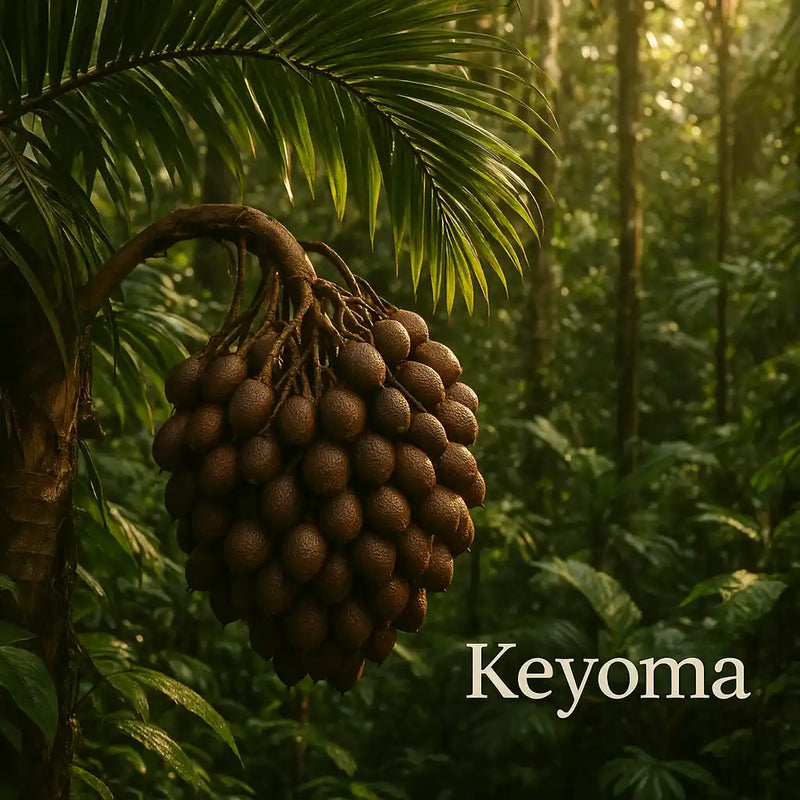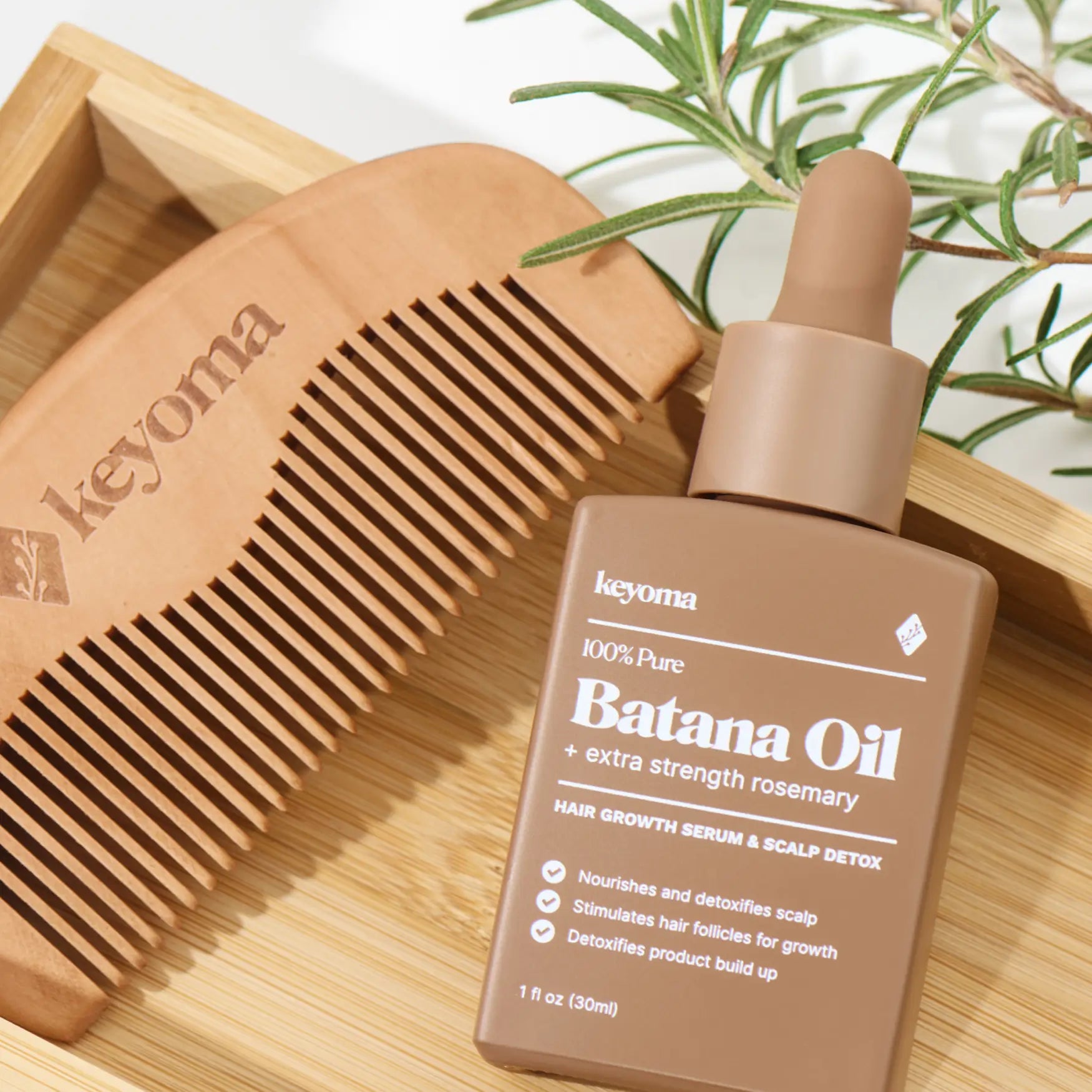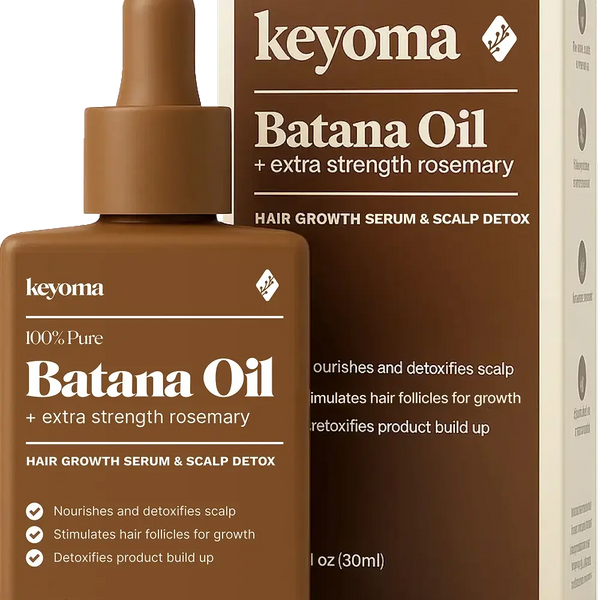Last updated
Jun 17, 2025
What Is the Batana Plant? Uses, Benefits, and Origins
Published on
Jun 17, 2025

In this article
The batana plant has caught the eye of people looking for something better than the usual synthetic formulas. Its nutrient-rich oil has been used for generations by indigenous communities in Central America, especially for hair growth, scalp recovery, and soothing dry skin.
More than the results, people are drawn to batana because of its sustainable sourcing and deep roots in ancestral beauty rituals. If you are tired of harsh treatments that overpromise and underdeliver, batana feels like a return to something honest.
To understand why batana stands out, you have to look at its origin, how it has been traditionally used, and how it compares to mainstream oil palms. And while trends come and go, batana stays grounded in something pure, effective, and culturally meaningful.
What is Batana Plant
The batana plant, known scientifically as Elaeis oleifera, is a lesser-known palm tree native to Central America, with the densest growth found in the rainforests of Honduras. It grows more slowly than the African oil palm and is usually harvested in the wild, not farmed on large plantations. Its fruit contains a rich orange pulp loaded with nutrients.
The oil itself is made from the pulp, not the seed. After harvesting, the fruit is boiled and its pulp is gently cooked to extract the oil. This is not an industrial process. It is usually done by hand, especially by the indigenous Miskito people, who have passed down this knowledge for generations.
Batana oil is thick, dark brown, and dense with omega fatty acids, antioxidants, and vitamins A and E. It is not mass-produced. It is handcrafted.
If you are frustrated by oils that did nothing for your hair or skin, understanding how batana is made might finally make things click. Its power is in its simplicity—and in the hands that make it.
Where the Batana Plant Comes From
The batana plant grows naturally in the rainforests of Honduras and nearby areas of Central America. It prefers hot, humid climates and often thrives where nature takes the lead. You will not find it lining the rows of large industrial farms. That wild environment helps preserve its nutrient density and natural purity.
For the Miskito people in Honduras, batana is not new. It is not a fad. They have used it for generations to care for their scalp, restore hair strength, and calm irritated skin. The oil is made by hand, not machines, and the knowledge behind it is passed from one generation to the next.
To them, batana is not just a product. It is a story, a skill, and a way of life.
Batana Plant vs African Palm
It is easy to confuse the batana plant with the African oil palm. After all, both produce oil and belong to the same plant family. But the similarities end there.
The batana plant grows in Central America. The African oil palm, on the other hand, is native to West Africa and now spread across global plantations. They have different growth habits, and they serve different purposes.
Understanding this difference matters. It helps you choose ingredients that align with your values, your needs, and how much you care about where something comes from and how it is made.
Batana Plant

The batana plant, or Elaeis oleifera, grows slowly and is native to Central America. You will usually find it in the wild or on small farms where people harvest it by hand. It has not been industrialized like its African counterpart. That alone keeps its impact smaller and its process more rooted in local communities.
What sets batana apart is how the oil is made and what it contains. It is taken from the fruit pulp, not the seed. That gives the oil a stronger concentration of nutrients. It is made in small batches with care, which keeps the quality high. The finished product is thick, dark brown, and packed with benefits for scalp repair, hair growth, and skin health.
Both the batana and African palms belong to the same genus. And both produce oils rich in fatty acids. But they are not the same. The scale, purpose, and origin behind batana make it a better fit for people who want cleaner, more ethical ingredients in their routine.
African Palm

The African oil palm, or Elaeis guineensis, comes from West Africa and is now grown in tropical regions all over the world. You will find its oil in everything— food, cosmetics, and even industrial products. What makes it stand out is the sheer scale. It is farmed on massive plantations that often lead to deforestation and harm biodiversity.
Like the batana plant, it belongs to the Elaeis genus and produces oil-rich fruit. But that is where the similarities end. Batana oil is pressed only from the fruit pulp. African palm oil, on the other hand, is extracted from both the pulp and the seed and processed in massive facilities. This difference impacts everything from the oil’s texture and nutritional value to its environmental cost.
Both oils contain plenty of fatty acids and can work for skin and hair. But the real difference comes down to ethics, sourcing, and how each one is made.
And that choice matters. It is not only about performance. It is also about impact, values, and respecting the cultures that keep these traditions alive. Batana reflects a slower, more intentional process. One that stays true to its roots.
Uses and Benefits of Batana

With so many plant-based oils out there making big promises, it is normal to wonder what makes batana stand out. The answer comes down to how it is made and what it actually does for your hair and skin.
Batana oil delivers real benefits because of its traditional sourcing, careful processing, and the way it is applied. You are not just getting nutrients—you are getting them in a form that your scalp and skin can absorb and use.
And once you see how it stacks up against other oils, it becomes easier to decide what truly works for you without falling for the usual hype.
Hair and Scalp Benefits
Batana oil is best known for supporting hair growth, calming scalp irritation, and helping repair visible damage. It goes deep, straight to the root. This oil absorbs into the scalp and delivers vitamins A and E, omega fatty acids, and antioxidants where they can actually do something.
People with thinning hair, breakage, or a stubbornly itchy scalp often see a difference after a little consistency. But unlike quick-fix chemical treatments, batana works in a slower, steadier way. If you have felt let down by those glossy serums that promise too much, this one feels more grounded. More honest.
Skin and Cosmetic Uses
Batana oil is packed with antioxidants and vitamins, which makes it a great choice for keeping your skin hydrated and helping it bounce back. It works by rebuilding your skin’s natural barrier, easing dryness, and making things feel smoother and more even. Thanks to its anti-inflammatory nature, it is gentle enough for sensitive skin or conditions like eczema.
If store-bought creams leave your skin red or irritated, using something this pure can feel like the relief you did not know you needed.
Traditional Healing Applications
Batana has always been more than a beauty oil, especially for the Miskito people. They have leaned on it for generations to ease scalp infections, calm skin inflammation, and even help heal minor wounds.
It became a go-to where access to modern medicine was limited. And they did not use it lightly. They used it because it worked.
When something stays useful for centuries, it is not a trend. It is something real you can feel in every drop.
Growing the Batana Plant
Trying to grow the batana plant at home is more complicated than most expect. This tropical palm needs humid air, regular rainfall, and rich, fertile soil. Those conditions are common in Central America, but rare in typical home gardens or indoor setups.
Yes, it is technically possible to grow from seed. But finding viable seeds is difficult. Most are sold for oil use, not for planting. And if you do find good ones, they grow slowly and demand tight control over temperature, moisture, and soil. It is not a beginner-friendly process.
For most people, it is more realistic to buy the oil instead. If the idea of growing your own appeals to your love of natural living, that makes sense. But supporting the communities that already do this with care may be the more meaningful choice.
Buying Authentic Batana Products
Not all products labeled "batana oil" are created equal. With demand growing, so has the number of diluted, misrepresented, or synthetic alternatives. Knowing how to identify the real thing can save your hair and your wallet. Whether you're shopping online or in person, it's important to look for clear signs of authenticity, ethical sourcing, and community involvement.
What Makes Batana Oil Authentic?
Real batana oil comes from Elaeis oleifera, not from the African oil palm that is more common in mass-market products. The real version is thick, dark brown, and has a roasted, nutty scent. It is made in small batches, by hand, using time-tested traditional methods that help preserve its nutrients.
Look for labels that clearly mention Honduras, wild-harvested, or indigenous sourcing. These are good indicators that the product was made with care, not shortcuts. If it is light in color or smells like perfume, it is not the real thing. Leave it behind.
Where to Buy Online and In-Store
You can usually find real batana oil through small, independent brands that focus on natural ingredients, ethical sourcing, and ancestral care. These businesses often sell directly from their websites or through platforms like Etsy. The most trustworthy ones are open about their links to Honduran communities and clearly mention indigenous sourcing on their product pages.
Some clean beauty boutiques and specialty stores with Central American products might carry batana oil, but that is not common. And when you do shop, do not skip the label. Look at the ingredients, ask where the oil was sourced, and find out how it was processed. If the answers are vague or unclear, that is a red flag.
Red Flags to Watch For
If the oil is clear, pale, or smells like perfume, it is probably not real batana. Authentic batana should be rich in color and have a roasted, almost earthy scent. Labels that do not mention Honduras, Elaeis oleifera, or cold-pressed methods are worth questioning.
Also, pay attention to the price. Real batana oil is labor-intensive and made in small batches. It is not supposed to be cheap. If a deal looks too good, it probably is not worth the risk.
Why the Batana Plant Deserves Your Attention
The batana plant is not hype. It is not some trendy oil with a short shelf life in the beauty world. It has roots, both literal and cultural, that run deep. From how it is grown to how it is processed, everything about batana speaks to quality, tradition, and care.
If you are tired of empty promises or ingredients that do nothing, this one is different. Batana blends ancestral knowledge, natural power, and real impact. You are not only treating your hair or skin. You are helping sustain the communities that have honored and protected this process for generations.
And that is what makes the batana plant stand out. It is real. It works. And it matters.
Featured Product
100% Pure Batana Oil + Rosemary
Obtenga más información sobre el aceite de Batana
Tu carrito
Su carrito está actualmente vacío
Podría gustarte...
Buscar en nuestra tienda








